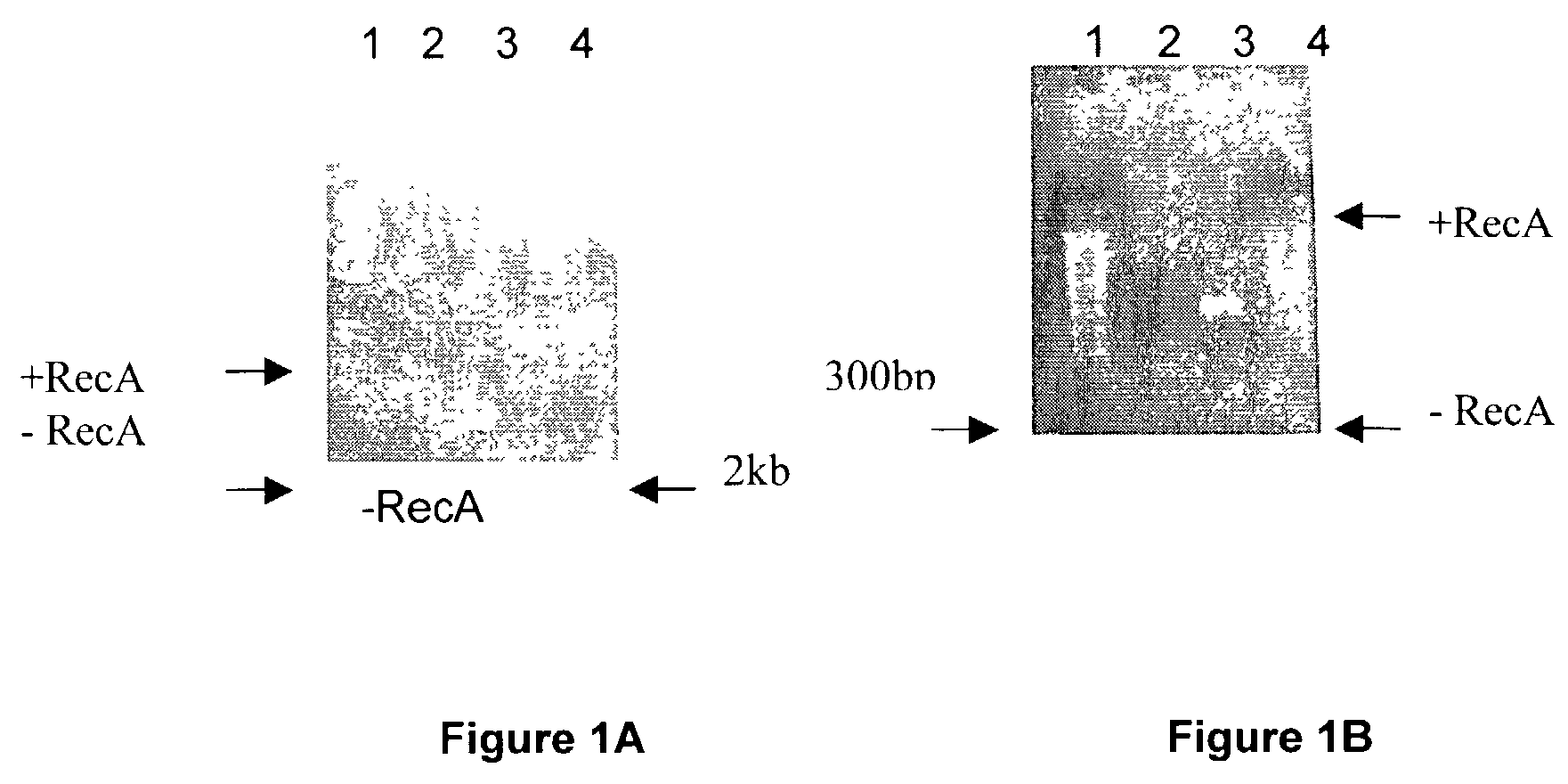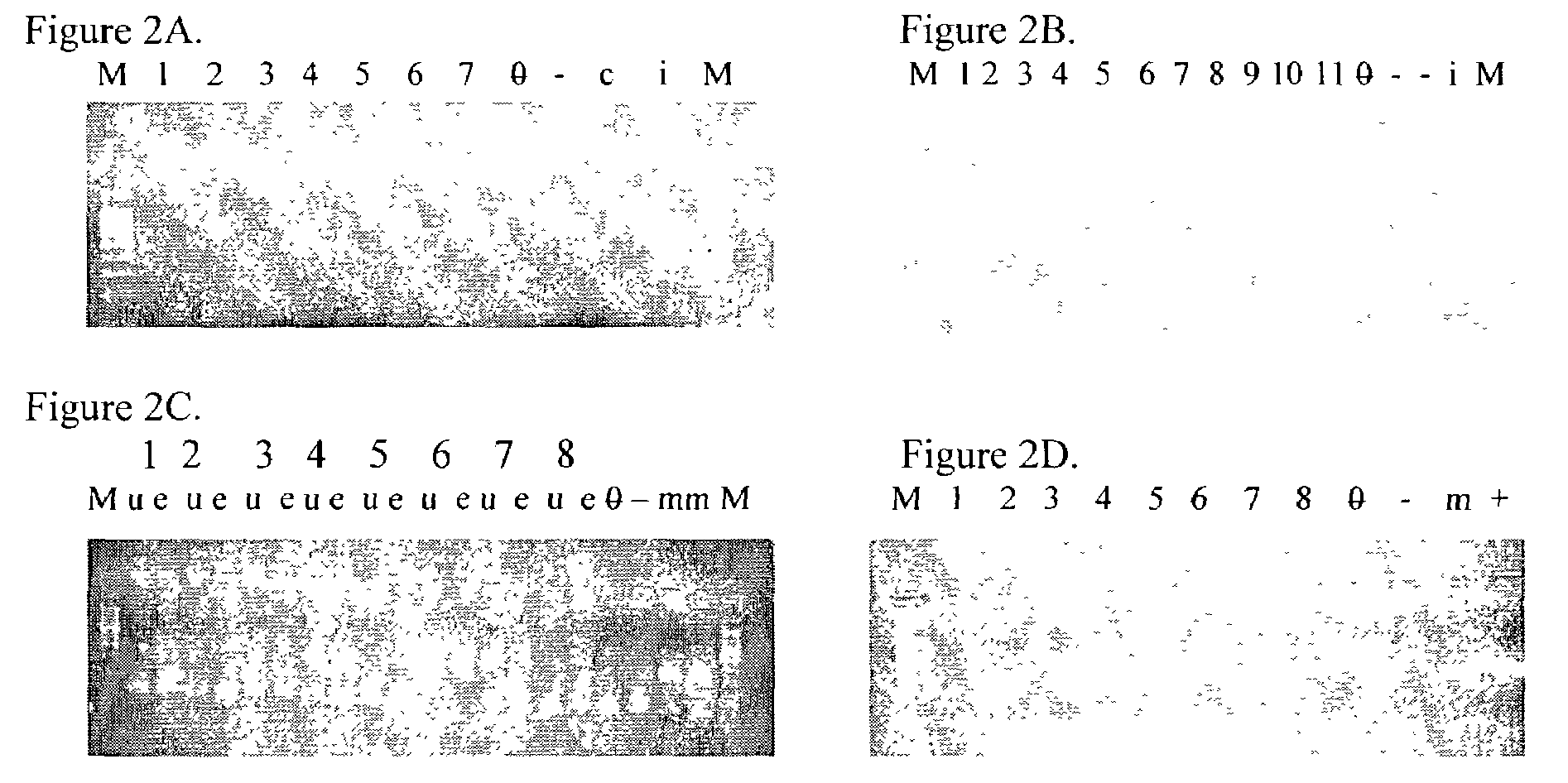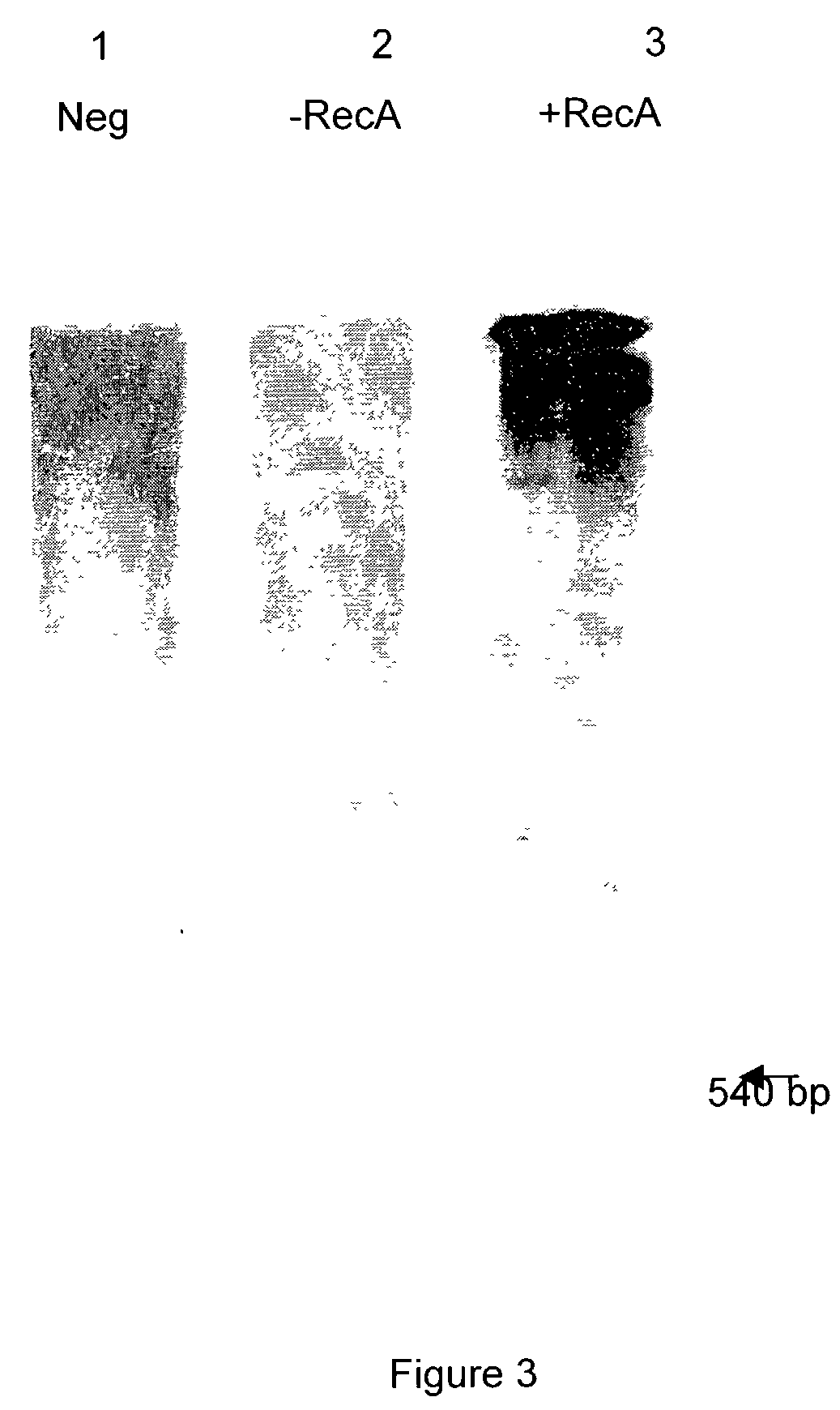Method of generating a transgenic livestock animal
a technology of transgenic livestock and livestock, which is applied in the field of transgenic nonhuman animals, can solve the problems of time-consuming and laborious optimization of transgene design, the method currently has several unavoidable shortcomings, and the production of transgenic livestock is not as efficient as mi
- Summary
- Abstract
- Description
- Claims
- Application Information
AI Technical Summary
Problems solved by technology
Method used
Image
Examples
example i
[0086]Increased efficiency in the production of transgenic goats made by the pronuclear microinjection of cssDNA probes designed to alter the properties of milk and transgenic pigs made by the injection of a modified 1,3α-galactosyltransferase (GalT) gene.
1. Injection Material
Goats
[0087]All injection material (probes) was designed using goat β-lactoglobulin (β-Ig) sequences in combination with various inserted cDNAs. A 311 base pair (from −157 to +154) DNA fragment of the goat β-Ig gene was amplified from goat genomic DNA by polymerase chain reaction (PCR) with primers A (5′AAATGGTACCGGGGCCCGGGGATGAGCCAA3′) (SEQ ID NO:01) and B (5′AAATTCTAGATGAGGCCCAGCTCCCCTGCC3′) (SEQ ID NO:02) and cloned into pBluscript SK (Stratagene, La Jolla, Calif.) by the use of KpnI and XbaI sites included in the primers. The resulting plasmid (pBLG1) was then modified to replace the translation start codon in exon 1 with a 13 bp mutation sequence (GCGGCCGCTCGAG) (SEQ ID NO:03) containing the unique restrict...
PUM
| Property | Measurement | Unit |
|---|---|---|
| temperature | aaaaa | aaaaa |
| temperature | aaaaa | aaaaa |
| temperature | aaaaa | aaaaa |
Abstract
Description
Claims
Application Information
 Login to View More
Login to View More - R&D
- Intellectual Property
- Life Sciences
- Materials
- Tech Scout
- Unparalleled Data Quality
- Higher Quality Content
- 60% Fewer Hallucinations
Browse by: Latest US Patents, China's latest patents, Technical Efficacy Thesaurus, Application Domain, Technology Topic, Popular Technical Reports.
© 2025 PatSnap. All rights reserved.Legal|Privacy policy|Modern Slavery Act Transparency Statement|Sitemap|About US| Contact US: help@patsnap.com



